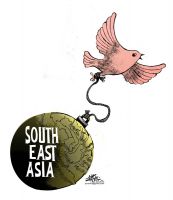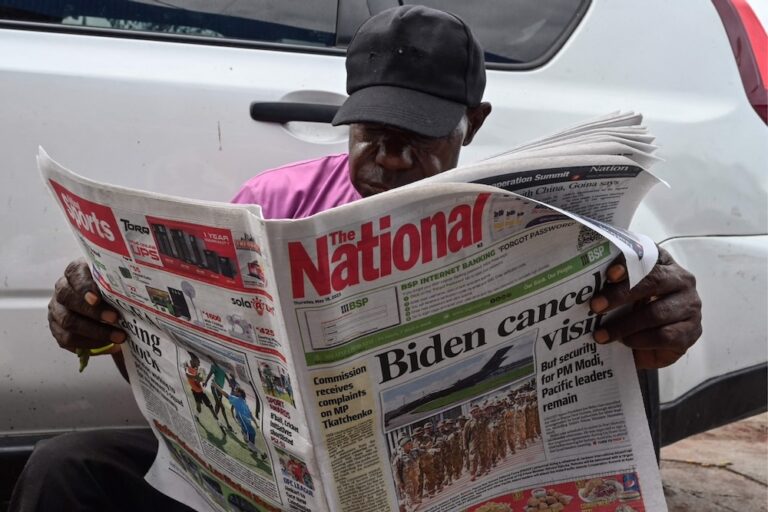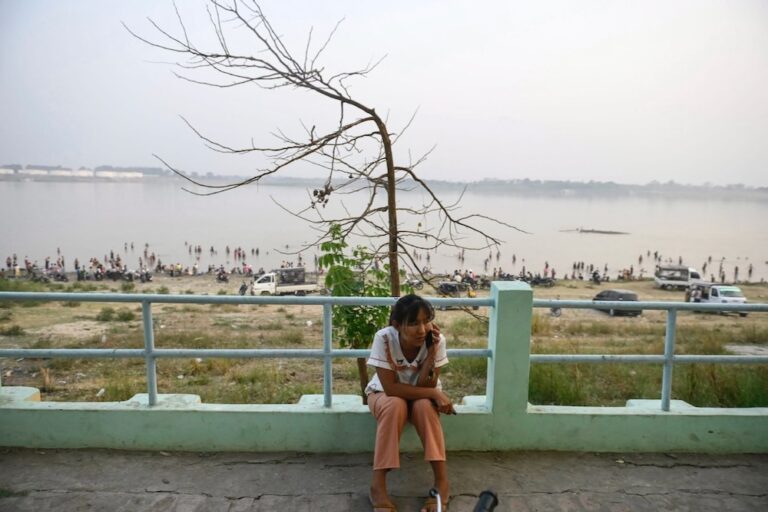As a whole, Southeast Asia has moved backward on media freedom in 2012 with more restrictive laws being enacted by governments, while in many countries journalists and civil society continue to be threatened by violence.
The year 2012 was a landmark year for human rights in the Association of Southeast Asian Nations (ASEAN), after its leaders unveiled its first ever human rights instrument, the ASEAN Human Rights Declaration (AHRD) on 12 November 2012.
The AHRD was widely hailed as a significant step towards better protection of human rights in a region notorious for its human rights record.
However, the regional group might be receiving commendation for finally having a human rights instrument, rather than for the standards in the document itself.
Human rights groups from the national, to the regional and onto the international level have criticized the document for failing to meet international standards, which regional instruments were supposed to enhance.
For example, with regards to the right to freedom of opinion and expression, the AHRD is an almost exact copy of the formulation of Article 19 of the UN Declaration of Human Rights, and reads: “Every person has the right to freedom of opinion and expression, including freedom to hold opinions without interference and to seek, receive and impart information, whether orally, in writing or through any other medium of that person’s choice.” (Article 23, AHRD).
The AHRD’s Article 23 has curiously omitted the phrase “regardless of frontiers” included in Article 19. This lapse can have serious implications for the protection of this right at the regional level, since it may be interpreted to mean that this in ASEAN key civil liberty only applies within national boundaries.
Because of other dilutions like this, and more because of important caveats that could be used to justify the denial of human rights, many groups have rejected the new document.
The low standard of the regional human rights aspiration reflected in the AHRD is a stark indicator of how the region has performed in the area of press freedom in 2013, as presented in the country reports. The themes are not new, but the stories are repeated through new circumstances.
Two key themes of restrictive laws and impunity for violence against media still resonate in the regional situation as of 2013, and represent long term issues of reform towards greater respect for the right to freedom of opinion and expression, including press freedom.
More restrictions
The Southeast Asian Press Alliance (SEAPA) observes that much of the restrictive legislation statutes that suppress media are still firmly in place in countries that have them – Brunei, Laos, Vietnam and even Malaysia and Singapore. Repressive laws in these countries are being strictly enforced, sometimes violently by law enforcement authorities.
These countries have continued to prioritize the interests of the state and the establishment over the people’s right to hold and express contrary opinion and contribute to open public debate. The central agenda is still to maintain political control over the media to protect national ideologies, ruling parties or social structures from those who dare raise questions and issues.
Self-censorship at the editorial or even news collection level is a widespread practice that has resulted so that mainstream media organizations can sustain existence in these countries.
In Indonesia and the Philippines, countries with relatively freer media, new regulations have been legislated and threaten to impede the work of journalists under greater threat of criminal defamation or restrictions in covering public interest information. In Timor Leste, a draft media law has exposed the intention of the state to regulate instead of protect media freedom.
Impunity
At the local level, violence not only happens as a result of state enforcement of restrictive laws, but also in the context of the attempts of government officials or private enterprises to restrict coverage of misconduct or the negative consequences of enterprises. In many cases, perpetrators are able to escape accountability because of influence over law enforcement or state sanction or protection of their activities.
An urgent related issue related to freedom of expression and media freedom are natural resource issues in the form of land disputes, illegal logging, mining, or energy projects. Cases in country reports on Burma, Cambodia, Laos, the Philippines, and Vietnam tell of community struggles to protect their livelihood by protesting against incursion. Journalists become involved when they try to cover disputes or uncover issues.
In must be emphasized that these issues are not simply local since they often involve foreign investment. Here ASEAN, and the impact of its drive toward regional integration by promoting investments from member countries, has some bearing and deserves a review in official the regional organization’s human rights and development processes and bodies.
For instance, Thailand and Vietnam are among the top three investors in Laos, and whose ventures or projects are often connected with land disputes.
The trend is related to the norm with which economic development and integration are being pursued at the cost of human rights, particularly the right of ordinary citizens to speak out and be heard through the media.
In some cases, like in those in Indonesia, violence against the journalists relates to ignorance of the media right to relay information to the public or as an assertion of authority of security personnel to maintain control over the situation.
The problem, like in state sponsored violence, arises when cases are not given redress or papered over because of official sanction or connections with the perpetrators.
Burma
Perhaps the best story to emerge on the media in 2012 is the dramatic changes in the conduct of politics and media in Burma, officially known as Myanmar.
The regional media community is excitedly monitoring and engaging in the developments affecting their colleagues in the country where the environment has significantly relaxed.
The changes in the media environment appear to be tentative, and cannot be described as true reform in the absence of legal and structural transformations.
To a certain extent, seeds of change similar to those happening in Burma are also becoming palpable in other countries. Be it in the valiant of grassroots communities in Cambodia, Laos and Vietnam to defend land rights, or the palpable shift in the political landscape of Malaysia and Vietnam, the right to freedom of opinion and expression has become an important forum for change.
These changes deserve an important forum at the regional level and it must be supported in order to tilt the balance towards at least nominal press freedom. With this at least, advocates can have something to hold on to – much like the AHRD – in pushing for real reform in practice.
SEAPA would like to thank and acknowledge the work of its members and partners in writing and/or contributing information in the national reports.
Organizations: Aliansi Jurnalis Independen (AJI Indonesia); Cambodian Centre for Human Rights (CCHR); Centre for Independent Journalism (CIJ Malaysia); Center for Media Freedom and Responsibility (CMFR Philippines); Timor Leste Journalist Association (TLJA).
Individuals: Nay Yaung Lin Khant, Sinfah Tunsarawuth, Yip Wai Fong, and friends in Brunei, Laos and Vietnam, who must remain anonymous to protect their safety.



